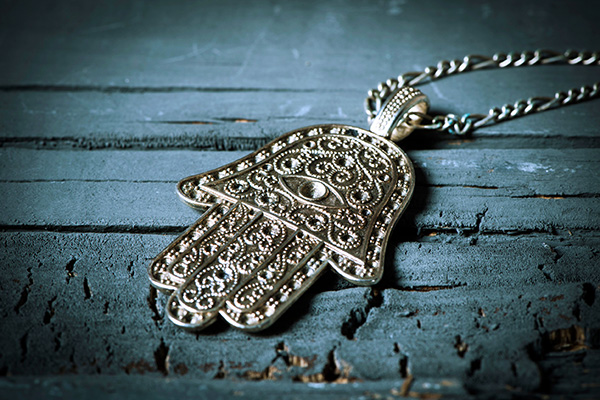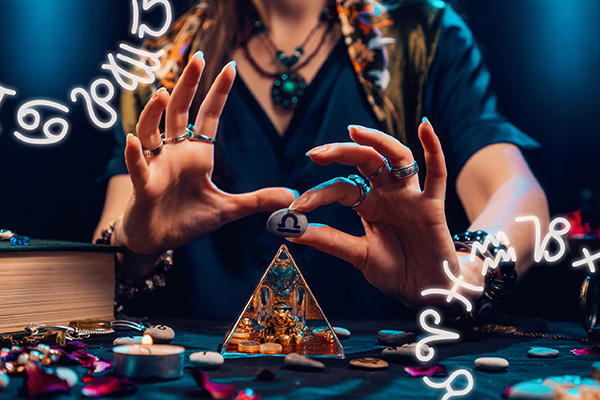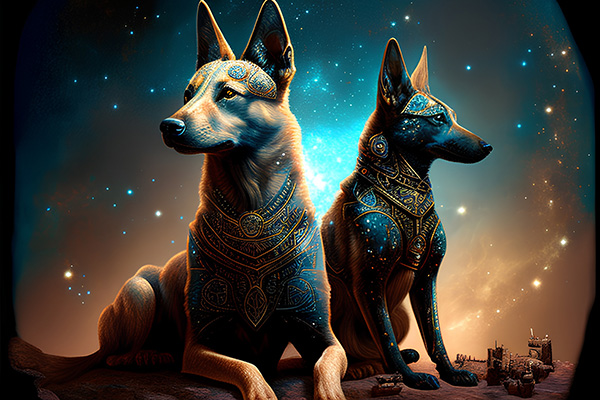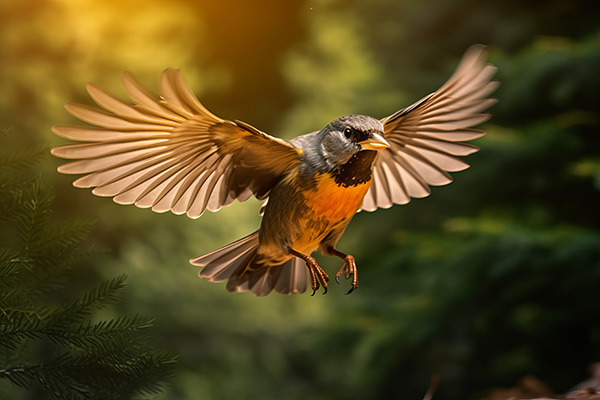ancient wisdom
The Mystical Symbolism Of The Hamsa
 The well-known Hamsa symbol has a rich tapestry of esoteric meaning that spans several cultures and religious traditions, including Islam, Judaism, and Christianity. It is commonly used as a protective amulet, offering protection from the evil eye, as well as a talisman or good luck charm, bringing its wearer blessings in the form of happiness, health, and fortune.
The well-known Hamsa symbol has a rich tapestry of esoteric meaning that spans several cultures and religious traditions, including Islam, Judaism, and Christianity. It is commonly used as a protective amulet, offering protection from the evil eye, as well as a talisman or good luck charm, bringing its wearer blessings in the form of happiness, health, and fortune.
The Hamsa is also known as the Khamsa, Hamesh, the Hand of Fatima, the Hand of Miriam, or the Hand of Mary. The names “Hamsa” and “Khamsa” both refer to the number five in Arabic while “Hamesh” means five in Hewbrew, all symbolizing the five fingers of the hand.
In Islamic tradition, this famous esoteric hand is named after Fatima al-Zahra, the youngest daughter of the Prophet Muhammad and his first wife Khadija. Fatima is known by many titles in Islamic tradition, of which al-Zahra (meaning “the Radiant One”) is one of the most prominent. Her life, devotion to family and faith, and moral integrity are admired and serve as an inspiration to Muslims around the world.
In Jewish culture, the hand symbol is named after Miriam, the sister of Moses and Aaron, who was a prophetess and is an important figure in Judaism. In some Christian contexts, it is also known as the Hand of Mary, although it is less commonly referred to by this name. In this instance it is associated with Mary, the mother of Jesus, who is revered for her purity, grace, and maternal protection.
The Ancient Wisdom Of The Two Wolves
 The story of the Two Wolves holds a special place among my childhood favorites. The moral of this Native American wisdom tale, thought to have originated with the Cherokee tribe, serves as a daily guiding light in my life.
The story of the Two Wolves holds a special place among my childhood favorites. The moral of this Native American wisdom tale, thought to have originated with the Cherokee tribe, serves as a daily guiding light in my life.
I must confess, there is some sentimental bias on my part, as this story also brings back lovely memories of my remarkable grandfather, Sequoia, a former medicine man and chief of the Cherokee Nation.
Variations of the story exist in various Native American cultures, and it typically goes like this:
One evening, an old Cherokee is teaching his granddaughter about life and says, “My daughter, a fight is going on inside all of us each day. It is the battle between the two wolves.”
“One wolf is evil — anger, envy, jealousy, sorrow, regret, greed, arrogance, self-pity, guilt, resentment, inferiority, lies, false pride, superiority, and ego. The other wolf is good — joy, peace, love, hope, serenity, humility, kindness, benevolence, empathy, generosity, truth, compassion, and faith.”
The granddaughter thinks about it for a minute and then asks her grandfather, “Which wolf will win?”
The Power Of Precision In Psychic Reading
 As a professional rune reader, I’ve come to appreciate the profound importance of preparation and precision in any psychic reading. The core element is the clarity of the question asked, which is paramount in any reading.
As a professional rune reader, I’ve come to appreciate the profound importance of preparation and precision in any psychic reading. The core element is the clarity of the question asked, which is paramount in any reading.
I find that clients who approach a reading with clear questions and sincere intentions usually receive the most transformative insights and accurate answers.
In the runic tradition, the clarity of the question has always been central to the practice. From ancient times to the present, seekers have always understood that the runes respond most powerfully to direct inquiries. I’ve seen firsthand how precise questions can serve as a beacon, directing the energy of the reading to the heart of the matter.
Various runic traditions, including Norse, Germanic, and Anglo-Saxon, have always emphasized the importance of asking clear and specific questions.
Ancient teachings also suggest that when consulting the runes, one should approach the practice with honor and respect. Questions should be asked with a sincere and genuine intent, recognizing the sacred nature of the runic symbols and the guidance they provide.
The Mythical Legacy Of Dogs
 The cat isn’t the only pet with a long history of myth and legend. Dogs have played an important role in human culture and spirituality for centuries.
The cat isn’t the only pet with a long history of myth and legend. Dogs have played an important role in human culture and spirituality for centuries.
The dog, or “man’s best friend,” is the subject of many magical tales, wisdom traditions, and folklore throughout the world. Like the cat, dogs were companions of the ancients and are still considered symbols of loyalty, courage and protection.
In Greek mythology, dogs are associated with the goddess Hecate, who is also known as the “dog goddess.” She is the goddess of witchcraft, magic, and the crossroads, and is typically depicted in ancient Greek art with a pack of dogs at her side.
Today, the brightest star in the night sky, Sirius, is also known as the Dog Star, because it is traditionally seen as the protector of the night sky. In many cultures, Sirius has been associated with dogs because of its brightness and prominence.
Perhaps the most famous dog in Greek mythology is Cerberus, the three-headed guardian of the underworld. Cerberus not only prevented the dead from leaving the underworld, but also the living from entering it. He was finally captured by the hero Heracles in one of his twelve labors. Another famous Greek dog is Laelaps, a swift dog given by the god Zeus to the hunter Actaeon. Laelaps was so fast that he could catch any prey, but he was also cursed to always catch his prey.
Grandma Will Wear Her Big Girl Boots!
 I recently discovered a website where you can “rent a friend”. It made me wonder, why would anyone need to rent a friend? Isn’t making friends a natural thing?
I recently discovered a website where you can “rent a friend”. It made me wonder, why would anyone need to rent a friend? Isn’t making friends a natural thing?
Normally, people who have something in common or enjoy each other’s company tend to gravitate toward each other. Even when attending a large social gathering, people tend to find like-minded people in the crowd to interact with. So, why in the world would anyone ever need to ‘rent’ a friend?
Well, the site had a list of occasions when one might want to purchase this type of service. Some of the things on the list included hiring a companion to be your plus one at a wedding, or to go to the theater, sightseeing, dinner, or even traveling abroad.
Essentially, the service connects people with common interests.
Then I wondered, are there really enough people who would use such a service to make it profitable? Apparently, there are and I should not have been be surprised. Our social life increasingly depends on digital technology.
Most of us are lucky if we can count on one hand the friends we can invite to join us on some of our adventures, let alone the few close friends we can count on in good times and bad. It is rare to have friends who have the time, money, or energy to do fun things with us on a regular basis.
Embrace The Fall Equinox In Mind, Body And Soul
 As the vibrant colors of summer begin to fade and the air becomes crisper in the northern hemisphere, we stand on the threshold of the fall season of transition and transformation. It is a sacred time to prepare our minds, spirits, and bodies for the winter months ahead.
As the vibrant colors of summer begin to fade and the air becomes crisper in the northern hemisphere, we stand on the threshold of the fall season of transition and transformation. It is a sacred time to prepare our minds, spirits, and bodies for the winter months ahead.
Today’s autumnal equinox is a poignant reminder of the cycles of life and the eternal rhythm of nature. Steeped in ancient tradition and folklore, this celestial event occurs each year around September 21st and marks the point at which day and night are of nearly equal duration. Spiritually, it symbolizes equilibrium; a momentary pause in time between the warmth of summer and the cold of winter. It invites us to reflect on balance and harmony.
Ancient civilizations held a deep reverence for celestial events such as the autumnal equinox, which were often seen as significant markers of time and the cycles of nature. The traditional interpretations and beliefs surrounding the autumnal equinox varied from culture to culture, but they generally recognized its importance in agricultural, spiritual, and cultural contexts, and saw it as a time of transition, balance, and connection between heaven and earth.
In many agricultural societies, the autumnal equinox signaled the time of the year’s harvest. The ancient Egyptians and Babylonians celebrated this event with festivals and rituals dedicated to their agricultural deities. This often included feasting, music, and offerings to ensure a bountiful harvest.
